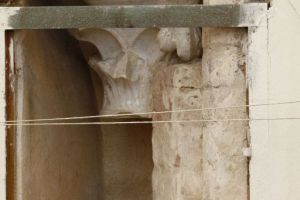The Church of Sant’Agostino
The Church: the Building Fases
The church of Sant’Agostino, located on the Prato di Sant’Agostino, is one of Siena’s most important sacred buildings, both from the architectural and the art-historical points of view, thanks to the great number of masterpieces it contains. Building began in 1259 when some Hermits of Saint Augustine, after official recognition of their order by Pope Alexander IV, bought for 220 lire two pieces of land on the so-called “Saint Agatha’s Hill” in front of the Porta dell’Arco, where the church now stands. Work moved very slowly for more than fifty years, supported by donations from the Commune of Siena, Santa Maria della Scala hospital, and private citizens. In the late thirteenth century, perhaps because the church was too small, the friars decided to build a transept between the nave and the high altar, making it necessary to build a crypt underneath it to bear the weight of the new structure. It is difficult to say exactly when construction ended, but the building had to have already been finished by August 1398, since documents tell us that a windstorm caused half of the bell tower to fall down; with its forty meters of height, it was one of the tallest towers in the city. However, the Augustinians were not completely satisfied with this church, and they asked the Commune for more money to add some chapels to enlarge the existing building. In April 1479, because of . . .



